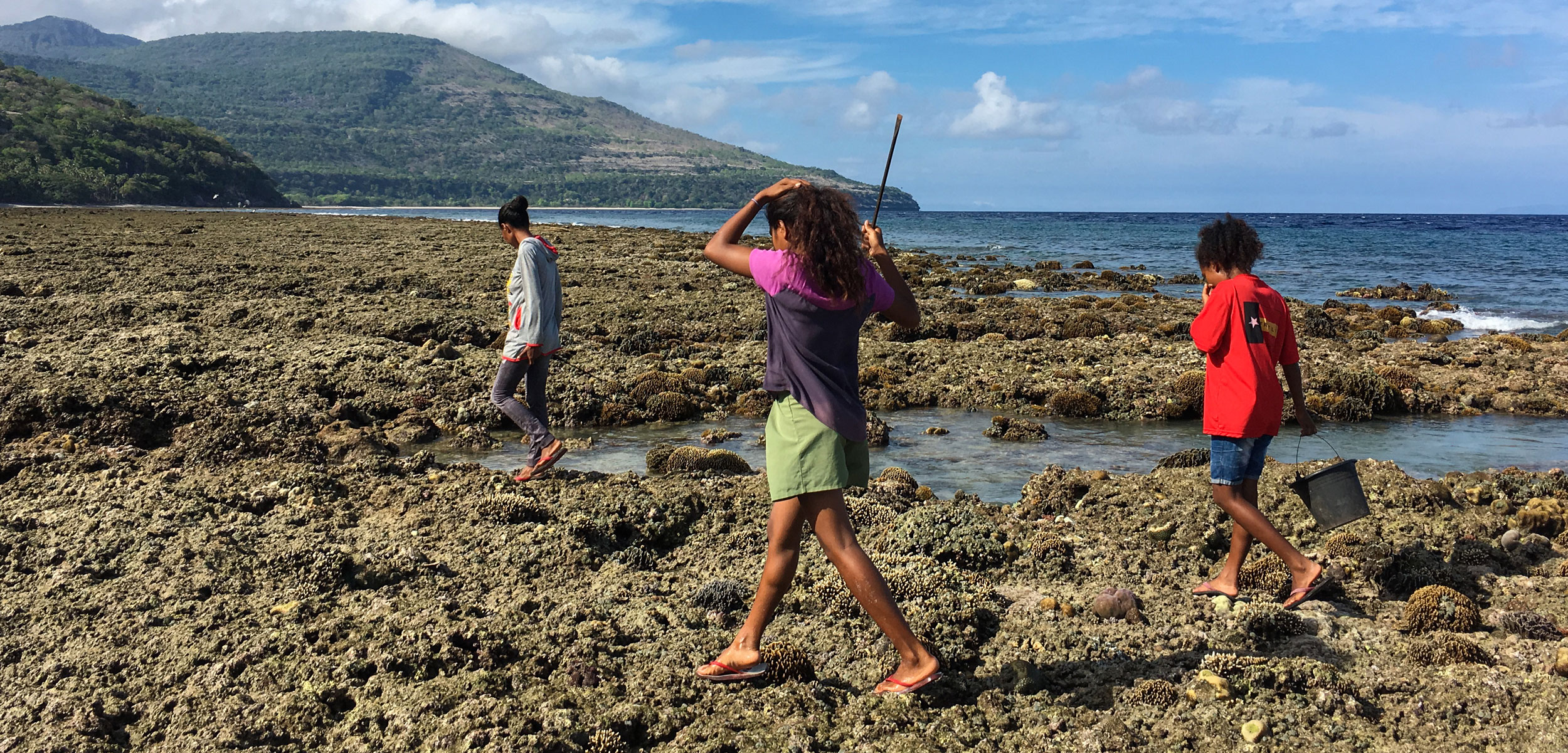Foraging Food, Forging Bonds
From socializing outdoors to relishing a favorite snack, the women of Timor-Leste glean for myriad reasons—and they go beyond food security.
Article body copy
On the west coast of Atauro Island, Timor-Leste, the 90 residents of Adara tell time not by months of the year but by conditions of the sea. The island lies north of Australia at the heart of the Coral Triangle—a region with some of the most biodiverse waters in the world. But from November to March, westerly monsoon winds create an ocean too tempestuous for fishermen in their small canoes. So the village’s women head to the shore, baskets in hand, ready to glean. During what villagers call the rough season, gleaning—the foraging for marine animals such as crabs, eels, and tiny fishes from the shore—becomes crucial to food security.
Highlighting these contributions to food security is what initially drew Ruby Grantham, a doctoral student who researches small-scale fisheries at James Cook University in Australia, to study the women gleaners. But as she made regular trips to Atauro Island in 2018 and 2019, she realized that gleaning offers so much more than just subsistence.
In a study published this past October, Grantham and her colleagues documented the non-material—and often overlooked—benefits of gleaning, which range from socializing with other women to enjoying nature. For the women of Atauro Island, gleaning is also an activity marked by independence; they decide when, where, and what to glean.
The gleaners can spend up to three hours at a time scouring the beach. They typically glean early in the morning or late in the evening to avoid the daytime heat, but low tide is best, even when it occurs at night. Beneath the light of the moon, the women venture out across the steep, pebbly beach and glean by the exposed reef flats with a flashlight. “I’d be going to bed, and the women would be all excited to go gleaning,” Grantham recalls. “Then they’d come back and sit up in the middle of the night eating their favorite catches.”
Gleaning is seen as a vital practice to pass on to the next generation. Mothers take their kids to the shore and teach them how to glean—no matter how young, says Grantham. “If they’re walking, they’re gleaning.”
The activity remains popular even among those well into old age. On one of her visits to the island, Grantham was told a story about two elderly women who have gleaned together since they were children. Both women have now gone at least partially blind, and yet they still go down to the beach to glean. “It’s just a part of their life,” says Grantham. “It doesn’t matter that they’re not finding seafood. They’re just doing an activity that they’ve always done together.”
Throughout the world, gleaning is done almost exclusively by women, says Sarah Harper, a postdoctoral fellow who studies gender equality in fisheries at the University of Victoria in British Columbia, and who was not involved in the new research. But as with other labor-intensive jobs that are often performed by women, such as collecting firewood to smoke fish, gleaning often goes unaccounted for when determining the role of fisheries in a community, she says.
Though gleaners play a critical role in securing food, their contributions are often overlooked and undervalued by policymakers in Timor-Leste, echoes Alex Tilley, a fisheries biologist with the nonprofit research organization WorldFish, who has studied Atauro Island’s gleaners. “What they’re doing is not considered fishing,” he says. “It’s just picking up a few things.”
The intangible social capital that the women gain from gleaning is similarly underappreciated, adds Harper. “Fisheries is an industry that has suffered from a very production-minded focus when it comes to data collection,” she says. “But if we’re not balancing that with livelihood benefits, we’re not operating with a complete picture.”
Grantham says her goal in publishing her research is to move beyond the narrative that gleaning only contributes to food subsistence, to one that encompasses the physical and mental health benefits of socializing outdoors. “All of that should be part of understanding food systems, not just what ends up in your plate or your pocket.”

